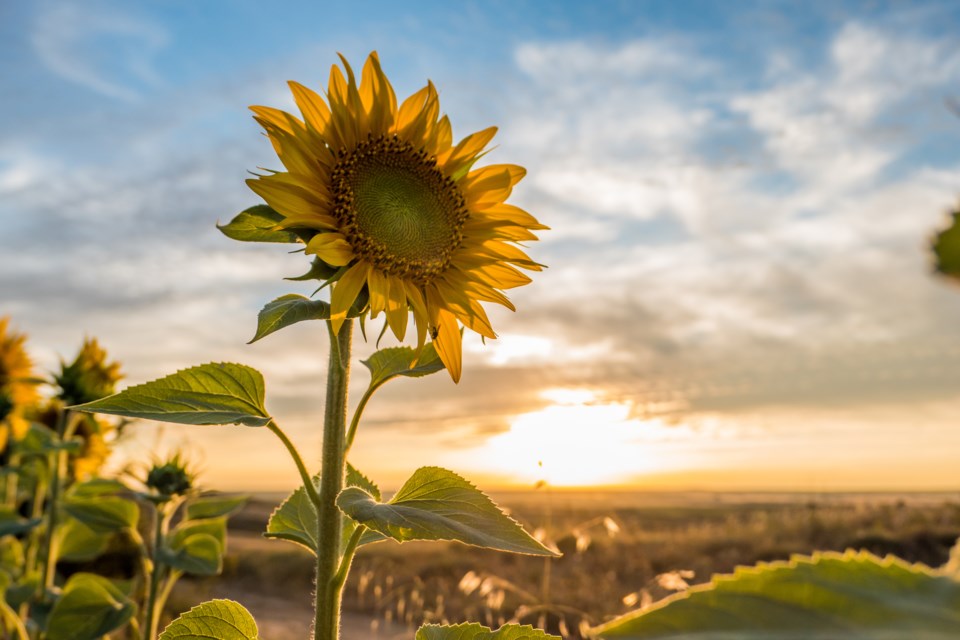WESTERN PRODUCER — Korey Peters is looking forward to seeding about 500 acres of sunflowers this spring.
“We really like them and the price is good,” said Peters, who farms near Randolph, Man.
He’s been upping his acreage since getting into the crop four years ago, but this year could be a particularly interesting one for North America’s growers, who are mostly in Manitoba and the Dakotas.
Ukraine is the world’s most important exporter, but it’s being ravaged by a Russian invasion and seeding is only weeks away.
How many acres won’t get seeded? Will crop management be affected by the Russian tanks, missiles and infantry hitting the country, the Ukrainian forces resisting them, and the likely input and distribution disruptions wrought by the violence and chaos? The crop’s production zone is caught between Russia’s invasion forces from the Crimea in the south and toward Kharkiv in the north.
Once the crop is grown and harvested, will it be possible to export it? Ukraine’s ports are being hit hard by the southern forces in the Russian invasion and the Black Sea is being avoided by commercial traffic.
Sunflowers are so significant in Ukraine that it’s the national flower. It’s also a regionally important food crop, with Turkey already anxious about supplies from Russia and Ukraine.
“Turkey is very vulnerable to Russia in terms of its energy needs. The country’s economy is also reliant on Russian imports, particularly wheat and sunflowers and also tourists,” says an article in Middle Eastern news agency Al-Monitor March 16.
What kind of a role could Western Hemisphere sunflowers play in meeting demand that Ukrainian sunflowers would normally satisfy?
Marc Audet, director of Delmar Special Crops, thinks questions over Black Sea exports of sunflowers make North American sunflowers a commodity that will attract more buyer interest this year.
“When considering the current situation, we may see very good opportunities for the Canadian black oil sunflower grower,” said Audet.
“Russia and Ukraine are very large producers of sunflowers and with this conflict, we may see the world oil sunflower supply being threatened. If this conflict continues and they are unable to plant a complete sunflower crop, we will see world sunflower demand looking to satisfy their demand from other sunflower-growing countries, causing increased pressure on our Canadian supply and an increase in planted oil sunflower acres.”
It’s also a question being pondered by John Sandbakken, the executive director of the United States National Sunflower Association.
“Given the volume they produce, in the time of year that it is, the U.S. and Canada are in the prime position to fulfil some of this market demand,” said Sandbakken.
“We’re the only two other major producers that can pick up some of the slack in the Northern Hemisphere,” said Sandbaaken.
Unlike corn, soybeans and wheat, all of which have tens of millions of acres of production, sunflower acreage is comparatively tiny and easy to significantly expand. Sometimes production in the Dakotas has been about one million acres. In Manitoba it can often be measured in tens of thousands of acres.
It’s an easy crop for farmers to increase just before seeding, and regardless of last year’s drought, which struck Manitoba and the Dakotas, obtaining seed shouldn’t be difficult.
“There’s plenty of seed available,” said Sandbaaken. Because of its hybrid nature, sunflower seed is mostly grown in California, so the drought hasn’t been a factor.
Before the war erupted, Sandbaaken already expected to see an acreage increase because of good prices since last year. Now that new crop prices have jumped, he’s sure more acres will be seeded.
“Last year was a very good price. This year it’s an even more phenomenal price.”
Last year at this time, sunflower prices were about US$20-$22 per hundredweight. This year they have jumped to $31-$32, with a big surge after the invasion began.
Peters isn’t speculating on how the Ukraine invasion will affect international markets. He’s a new grower and is just building his understanding of the unique market that sunflowers serve.
But so far, his good experience encourages him to keep expanding. The crop lost many acres during the 2000s, when wet years caused problems with sclerotinia and late harvests. From 190,000 acres in 2006, Manitoba sunflower acreage fell to below 100,000 five years later, and often half of that.
Peters avoids sclerotinia by growing sunflowers only on non-canola land, which is part of his farm with sandy soil about an hour’s tractor-drive from the “home farm.”
He likes the crop, worries about the disease risk, is enjoying today’s prices, and is concerned about the heavy fertilizer demands the crop brings.
“In a year or two when the prices come down but fertilizer stays high, that’s when the struggle will show,” he said.
However, for now, in both Manitoba and North Dakota, farmers are looking at a year in which sunflowers should be a profitable part of the rotation, regardless of the final results in Ukraine.

